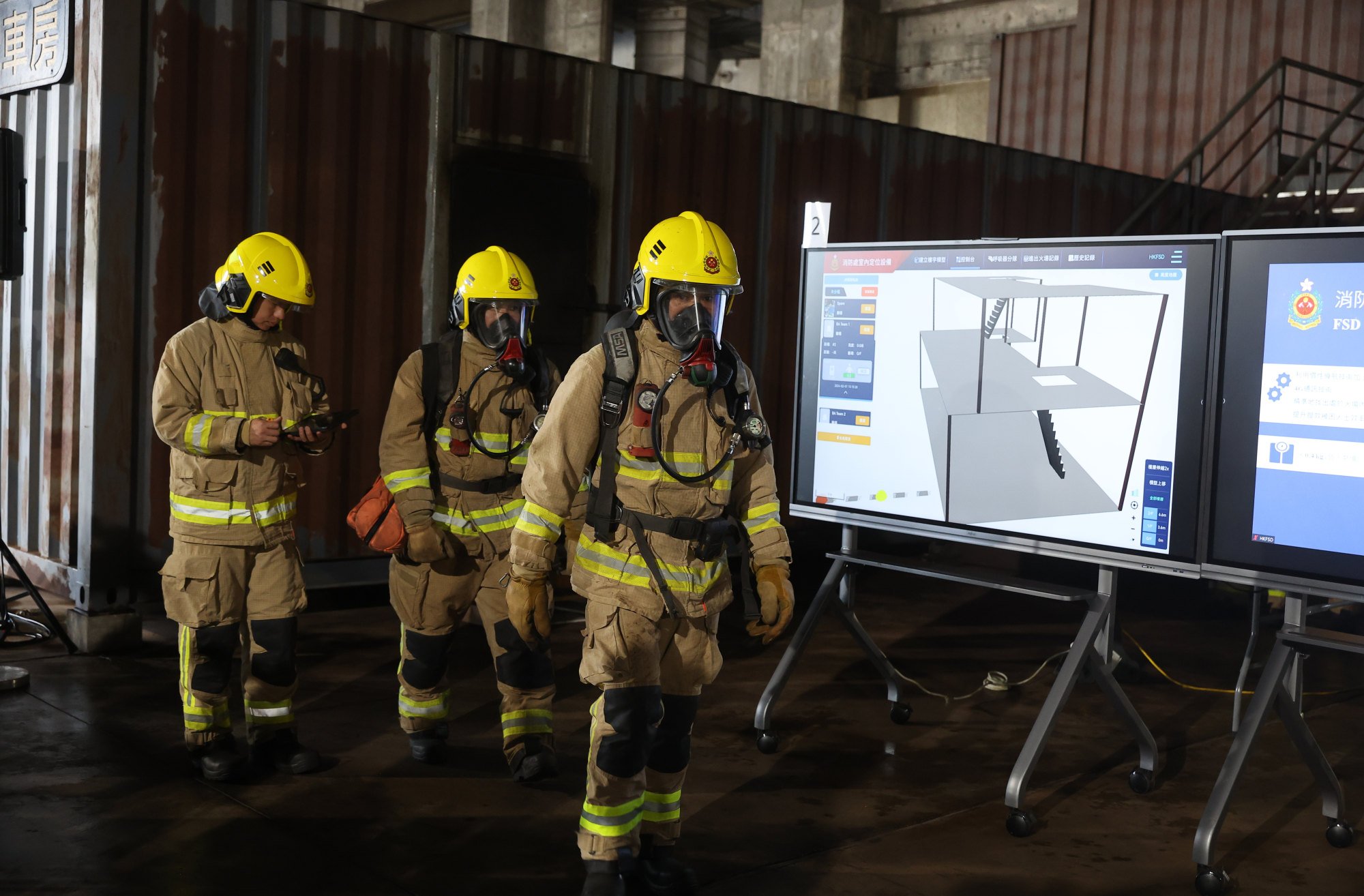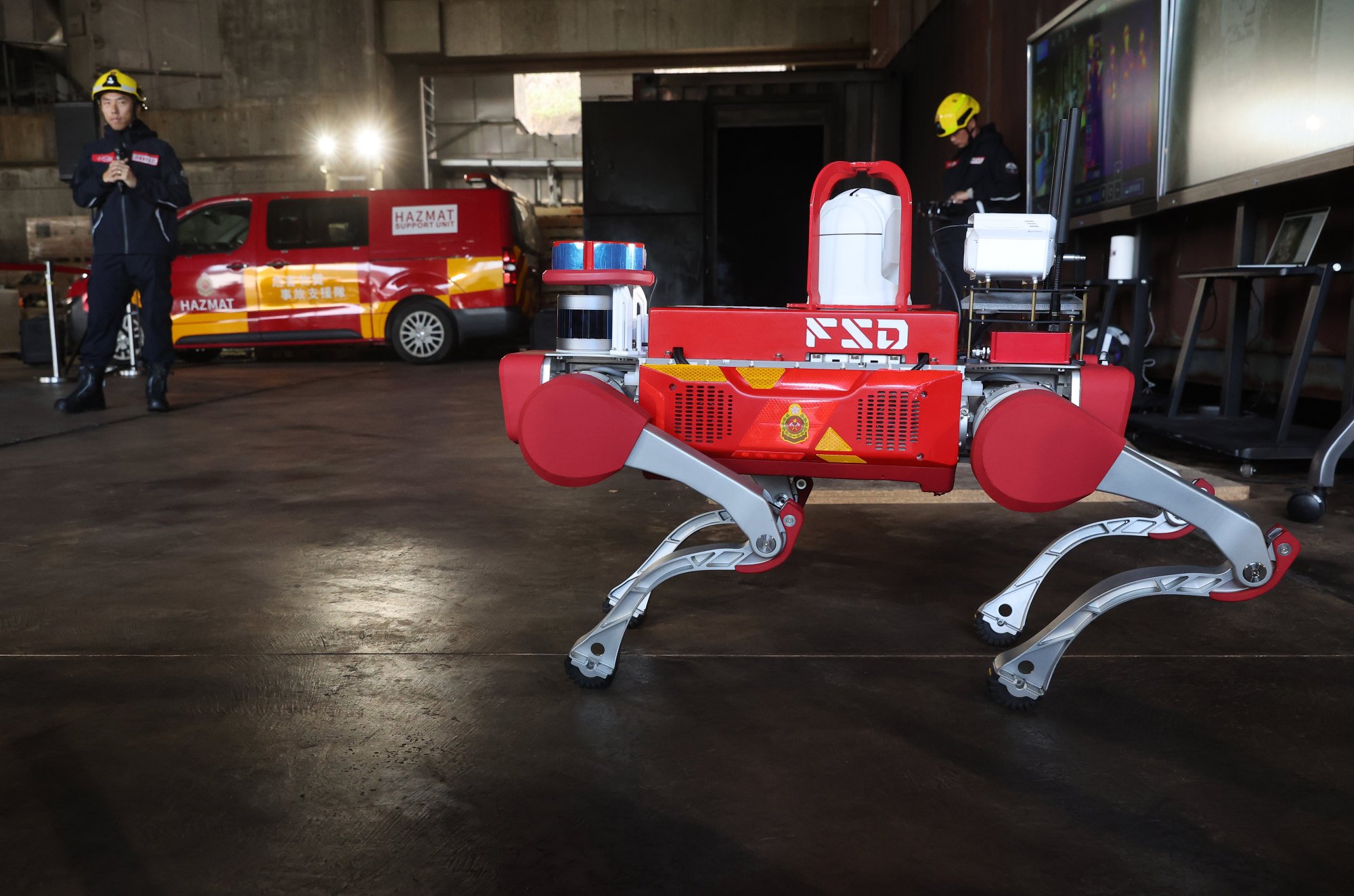A recent relaxation of recruitment rules has resulted in the number of job applicants for Hong Kong’s fire service surging 67 per cent and fitness test pass rates rising 30 percentage points, according to the department’s chief.
Director of Fire Services Andy Yeung Yan-kin revealed on Thursday that the pass rate for fitness tests across firefighting and ambulance roles rose from 60 per cent to around 90 per cent after new physical standards were put in place on December 1.
“But I must stress that this is an entry requirement, during our 26-week training we will strengthen our colleagues’ fitness standard to an acceptable level,” Yeung said, noting the relaxation measure had been effective.
Do you have questions about the biggest topics and trends from around the world? Get the answers with SCMP Knowledge, our new platform of curated content with explainers, FAQs, analyses and infographics brought to you by our award-winning team.

Eyesight and fitness requirements for operational posts have also been relaxed to allow candidates who wear glasses into station officer roles. The time limit for all tests has been extended to 90 seconds with the number of challenges cut, in a bid to reduce staff shortages in the frontline fire and ambulance service.
As of November last year, 3 per cent of fire jobs were unfilled, with 90 vacancies for station officers, the most difficult position for which to find staff.
Yeung said the Fire Services Department was looking to fill 727 vacancies across its operational posts this year, including 145 spots for officer-level staff.
Hong Kong fire service looking for more recruits with eyesight rule relaxation
The department received 463 applications for firefighting and ambulance posts between December and January 14, a 67 per cent surge compared with the same period a year earlier.
Two candidates wore glasses among the 18 applications for station officer.
Following Chief Executive John Lee Ka-chiu’s announcement of a cross-border emergency response mechanism in his last policy address, Yeung said he would sign off on the plan with rescue squads in mainland China and Macau this year.
He said the Greater Bay Area Emergency Response and Rescue Operational Plan would consist of three parts – an online platform for strategy sharing, a list of equipment and manpower for deployment and a mechanism detailing how cross-border help in rescue would work.
Yeung, who led his department’s discussions with counterparts on the mainland and in Macau, said the city and its cross-border partners had different strengths. For instance, the city had an advantage in tackling hazardous-material incidents.
But he said Guangdong province was more experienced in handling floods, as teams there had advanced equipment such as unstaffed vessels and drones, as well as better training and technical expertise on such disasters.
The department also said the number of fire reports in 2023 rose 3.8 per cent year on year. Among the 36,103 reports, nine involved No 3 alarm fires or above.
Among them was a blaze at the redevelopment site of the former Mariner’s Club in Tsim Sha Tsui, which took nine hours to put out. The fire was categorised as a No 4 alarm, the highest level.
The number of ambulance calls rose 10.3 per cent to 816,329 last year. Ninety-five per cent, or 775,625, were emergency calls, with ambulances arriving on-site within 12 minutes for 94.3 per cent of them.
Hong Kong’s fire services roll out first electric motorcycles for 5-month trial
The department also revealed new equipment it would be using on rescue missions this year.
A new system will allow firefighters to track the movements of colleagues in dark and smoked-filled sites.
Bought from the mainland at HK$500,000 per set, the system includes eight wireless pedals, a tablet to track the paths and location of personnel, and sensors for each firefighter. The department currently has five sets ready for use.

Firefighters start the tracking process by stepping on a pedal, which sends signals to connect with sensors in their suits.
For incidents involving toxic gas or materials, the department will be able to deploy a new robotic dog to locate victims inside hazardous environments.
The nimble HK$1.2 million mainland-made device has four limbs allowing it to walk or crawl, as well as a platform to carry high-definition and thermal cameras that can relay images back to rescuers outside the contaminated area. The robotic dog can work for two hours when carrying the cameras.
More from South China Morning Post:
- Hong Kong’s fire services roll out first electric motorcycles under 5-month pilot scheme
- Hong Kong fire service is easing requirements for applicants but recruits still need to pass training programme to join, school chief says
For the latest news from the South China Morning Post download our mobile app. Copyright 2024.





